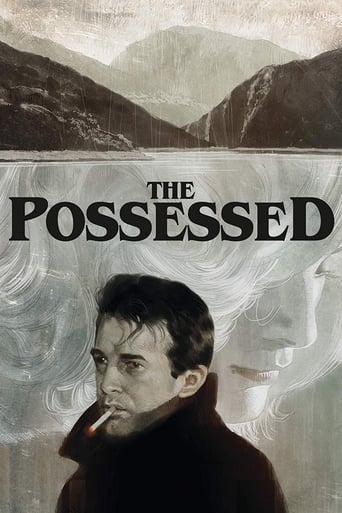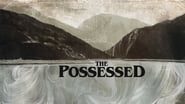Bezenby
This early giallo has the look of Bazzoni's later The Fifth Cord and the mood of his last film Footprints On the Moon, and once again the director impresses with a mix of noir-ish visuals and people thinking a lot.Bernardo is a burned out writer who, following a failed relationship, heads to a hotel on the edge of a lake where he was once infatuated with a maid named Tilde. He plans to take their relationship further, but only if he can find her. He should have probably asked where she was while he was on the phone booking a room because it turns out that Tilde committed suicide the previous winter. Maybe he booked through Trivago or something and didn't get the chance to speak to a real person.Someone in town confides in Bernardo that there's a rumour going around town that as well as ingesting poison Tilde must also have accidentally slashed her own neck with a knife too, which sets off Bernardo on a quest to find out what really happened to this woman he was technically stalking. Seriously - at one point we get a flashback to Bernardo spying on Tilde getting some from a mysterious horny stranger. The mystery deepens as certain characters in the hotel start behaving strangely. First off there's the owner's daughter Irma, who is upset that the family's reputation is shattered, then there's her brother Mario and his weird wife who barely talks and walks around the lake at midnight, then there's the owner himself, whose happy, servile façade begins to slip as Bernardo goes snooping around the place.Although there's not a lot of action in this one the general moodiness of the piece is cranked way up. Just like the brilliant Fifth Cord, Bazzoni uses light sources a lot here and often has his actors standing in front of harsh lighting, saving the weirdest light tricks for when Bernardo is either fantasising about the suspects motives or having one of many vivid dreams. There's quite a lot to compare to Footprints on the Moon as well, with one lonely character in a deserted holiday resort trying to figure some strange puzzle out.For a really early giallo, and for Bazzoni's debut, this is a slick, well made film. It would be a good double-bill with Libido and The Third Eye (an early giallo with all the nastiness in place).
sinful-2
This movie is about a writer that takes on a trip to the place where he use to go to write in hope of meeting the girl that was maid in the hotel last time he was there.He finds out she is dead and that it possibly is murder and not suicide as the official explanation is. Then he starts to search for the truth about her fate and very few clues is found during the movie and very few events that really make the story interesting. In the end all is explained though.I think the camera work and acting is fine. For me the story was after an interesting start just as exiting to follow as it is to read a newspaper. I would not recommend this movie to people where the story is the important thing. I think it is most for people that enjoy some certain style of black and white movies.
chaos-rampant
Some people consider this a proto-giallo. It kind of is, in the same way The Girl Who Knew Too Much resembles a giallo, actually it's a 'woman gone missing' mystery shot in black and white where a lot of the usual giallo tropes are absent for the simple reason they had not been mapped down yet; the same movie made ten years later would have probably been shot in garish Technicolor, the murders would take place on screen and we'd be treated to the black-gloved hand of the murderer. A lot of common giallo themes can be found here though, sexual obsession, distorted memory, a chain of events is unlocked when a character visits a place of his past, the boundaries between reality and fantasy/madness blurred by something that may or may not be a product of the mind, yet I'd place the movie closer to the psychological horror Polanski was yet to do than Mario Bava, or a movie that would influence the gialli of Sergio Martino more than those of Dario Argento.If you take it apart to study the parts it was made of, you'll find a lot of familiar ideas reconfigured together in similar ways in other movies. This is the type of movie where a fiction writer (who is "dead inside" by his own admission) arrives at a remote town by a lake to look for a girl who presumably committed suicide a year ago, the town streets are empty and there's talk of a family harboring a "terrible secret", the writer stays at an old hotel where according to the suave-creepy owner "he's the only resident" because it's off-season, at some point a photo of the dead woman is presented that throws a new light into the situation, and there's a mysterious slaughterhouse behind the hotel that looks like the abandoned warehouse Nosferatu hauls his coffin to in Murnau's 1922 film.The movie does a lot of something I find annoying: a scene where people behave in odd ways or has a certain kind of offbeat atmosphere plays out and then we cut to a shot of the writer jolted awake in his bed back at the hotel. Bazzoni is a little too quick to point out "DREAM SCENE!!" to his audience, a little too quick to reassure the viewer that "this part that didn't make sense wasn't really supposed to" so that as the movie begins to morph into something else we're lulled back to the safe environment of the genre picture, where the protagonist can narrate his thoughts in voice-over and where 'dream scene' appears to be the director's way of saying "I want to shoot with the whites washed out".But even that is not what it seems, because at some point we get the flashback of a memory of something that happened in one of the writer's previous stays in the hotel, the writer walks up the stairs and spies on a love scene between the dead woman and a man he can't identify, and we get extreme closeup shots of an eye watching this through a keyhole. Later this memory is expanded upon in the writer's mind and what we saw at first suddenly takes new meaning so that the love scene may had not been a love scene and the victim may had not been the victim after all, but it doesn't become clear whether this is a repressed memory unlocked by circumstance or a wish fulfillment dream, the writer furnishing a twisty conclusion worthy of one of his pulpy books to an incident that remains unexplained and ambiguous like most real life situations usually are. Fittingly this new twist feels very film noir, deceit and greed is involved and for a moment the moral universe of the film is turned on its head.This is what I take from the Lady of the Lake, like the blurry photo that is only a magnified detail of a larger frame, the sense of mystery partially revealed to us for a moment then withdrawn from our eyes again. Now the mystery is ours, literally to inhabit the memory. Or better yet, there's a strange melancholy woman in a white coat who walks by the beachwalk every night by herself and we watch her stroll under the lamp posts from the window of our hotel room. One morning she's found dead and if only we'd have gone down there to talk to her while there was still time.Near the end the movie shifts from eye-level Shining track shots of hotel corridors to vertical shots of the protagonist going down a spiral staircase, the whole geography is now inverted, and we're invited inside the mysterious slaughterhouse for the big reveal. There we get portrait shots steeped in shadow and claw-like hands emerging in silhouette from behind a white glass panel. It's all a bit like we're seeing the seedy industrial locations of Tetsuo through the wintry viewfinder of Sven Nykvyst, or like fetish filmmaker Maria Beatty had brought her inky blacks to the glowy diffused whites of Funeral Parade of Roses.For the end the movie feels the need to explain itself and provide a definitive conclusion, with the villain recounting the whodunit details to the protagonist, and then in very melodramatic fashion a crazed woman is running down the beach, arms flailing wildly. The Italo-horror fan will savour the whole thing start to finish, but there's enough surreal oddity here to make even the Last Year at Marienbad crowd sit down and take notice.
The_Void
The Lady in the Lake is often seen as a precursor to the Giallo style that would reach it's peak in the early seventies; and I can certainly see why. However, I would say that the film is closer to a supernatural mystery film than a Giallo and it also shares a lot in common with the popular American film noir style; stemming from it's picture, execution and subject material. The film is very much of the high quality variety and director Luigi Bazzoni takes time and a lot of care to ensure that the film is haunting and mysterious as possible - which pays dividends as the plot starts to pan out. We focus on Bernard; a writer who goes to spend some time in a dilapidated hotel where he spent some time the previous year. Once he gets there, he begins searching for Tilde; a young maid he fell in love with during his previous visit, but he's surprised by the news that Tilde killed herself. However, it would appear that there is more to the apparent suicide as Bernard is shown a picture suggesting she was pregnant...The film is directed by Luigi Bazzoni, who go on to make one of the best seventies Giallo's with the excellent The Fifth Cord as well as one of the oddest genre films with Footsteps in 1975. There's also a writer's credit for Death Laid an Egg writer-director Giulio Questi, so rather unsurprisingly - The Lady of the Lake is a rather bizarre film! It starts off simple enough and the first half of the movie is pretty easy viewing, but then things start to get a bit stranger in the second half and it becomes easy to loose the plot. It's lucky then that there's more than enough to keep the audience otherwise entertained. The cinematography is absolutely gorgeous and the black and white picture allows the director to capture a real macabre and moody atmosphere. The town in which the film takes place is a masterpiece within itself - the ghostly local population in particular is memorable. The plot comes back together towards the end and the film does give closure to its central plot line. Overall, The Lady of the Lake will probably not please all viewers; but it's a very well made mystery and anyone that considers themselves a fan of Italian cinema should check it out!




